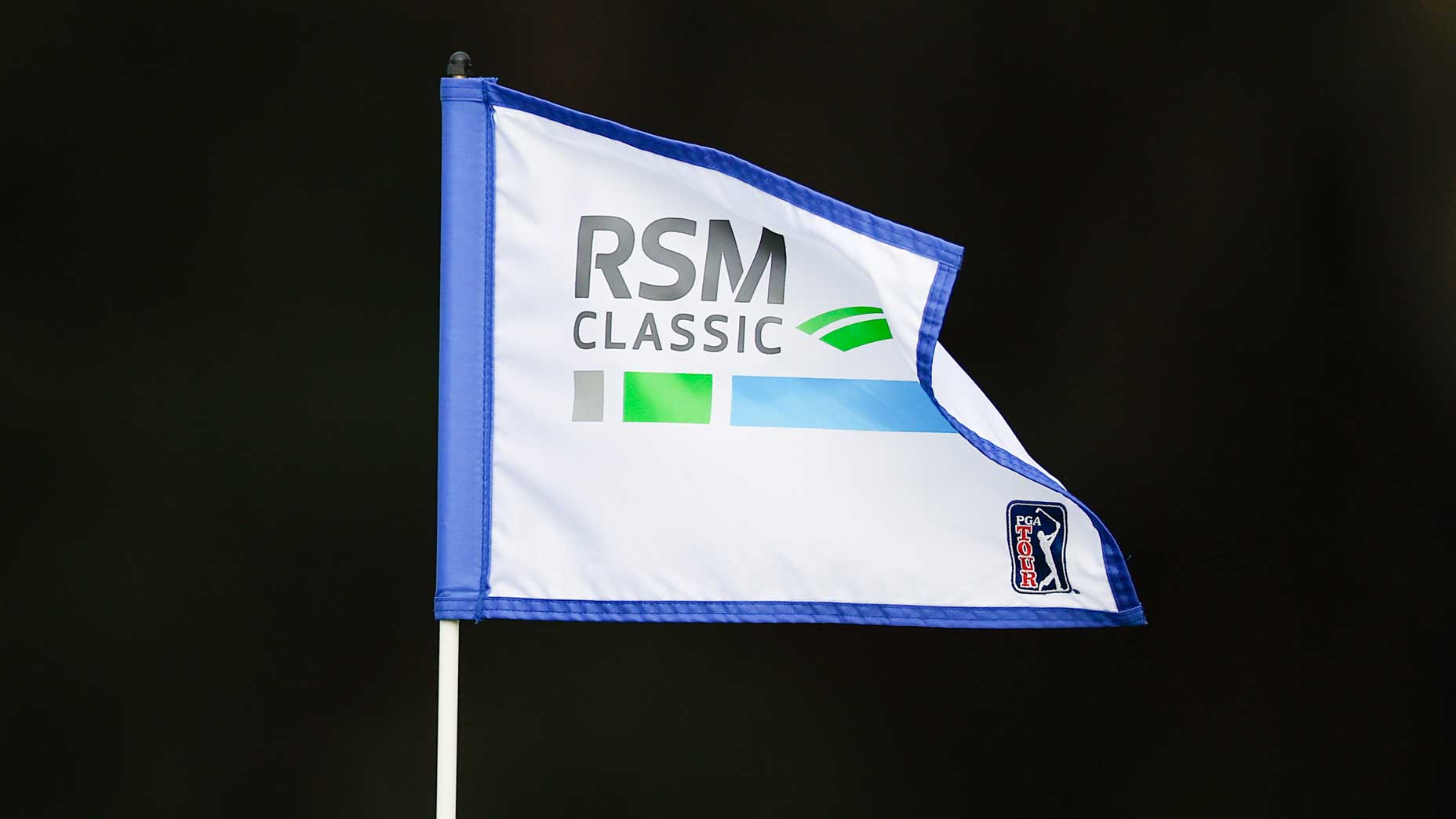Critics say new PGA Tour events copy LIV. Are they right?
- Share on Facebook
- Share on Twitter
- Share by Email

Jay Monahan and Greg Norman have two different products. But some think the PGA Tour's recent decisions mimic that of LIV Golf.
Getty Images
In 2022, the story of professional golf was the story of LIV’s emergence and the professional golf world’s swift, significant reaction. An announcement this week proved that this era of change will extend into 2024, too, as the PGA Tour announced its biggest schedule change in years. Beginning next year, a smaller number of players will have access to the biggest purses and the biggest events, creating, as Rory McIlroy called it, a “pro-competitive” move.
It has created a dynamic where the best performing players will be able to fill their plates (pick their schedules) a la carte, while the rest of the Tour can only choose from the buffet. The announcement of a new tier of limited-field, no-cut, big-money events immediately caught golf fans’ attention: was the PGA Tour just copying LIV Golf? The rival tour intimated that itself.
“Imitation is the greatest form of flattery. Congratulations PGA Tour. Welcome to the future,” the official LIV account tweeted.
Imitation is the greatest form of flattery. Congratulations PGA Tour. Welcome to the future.#LIVGolf
— LIV Golf (@livgolf_league) March 1, 2023
But it’s not quite that simple. There are similar elements, of course. But just how similar are they? We’ll let you be the judge after the breakdown below.
No cut?
Among the critiques lobbed at LIV Golf was the fact that none of its events feature a cut. All 48 competing players take home a check north of $100,000, even if they finish dozens of strokes behind the leader. Where are the stakes in that?
The same critique can sort of be made for the Tour’s recent decision. There will be eight mega-millions no-cut events in 2024. That will only make up about 20-25% of the PGA Tour’s annual schedule load, despite dominating headlines earlier this week. LIV events, on the other hand, feature no cuts across the board, which is a major distinction. The absence of a cut has been a major point in the debate over LIV gaining world ranking points. That will be a slightly tougher argument to make, now. Defenders of the PGA Tour’s system will argue that the cut happens in advance of the tournament; pros will earn their spots in the limited field. But how should points get distributed for the 2024, no-cut AT&T Pebble-Beach pro-am? Any differently? (By then, we may have our answer with LIV’s points anyway.)
What do we make of the PGA Tour’s new Designated Events Model?By: GOLF Editors
More money?
Absolutely. The PGA Tour would not have dug out the funds needed for $20 million purses — from reserves and from sponsor commitments — were it not for LIV Golf disrupting the market. In that sense, select events with massive purses is definitely a copied maneuver, although “more money” isn’t exactly a new or original concept in pro golf.
As Patrick Cantlay noted Wednesday morning: “I think in general if a company or a product doesn’t have competition, the incentive to innovate is low. So now, with competition, it makes everyone want to look inside to see how they could make their product better, how they could do things better. I think the Tour’s done that. I think this accomplishes that.”
Patrick Cantlay on if the Tour changes were brought on by LIV's existence:
— Sean Zak (@Sean_Zak) March 1, 2023
"Without competition, the incentive to innovate is low. So now with competition, it makes everyone want to look inside to see how they could make their product better…
“I think the Tour has done that." pic.twitter.com/IMRbYW3mvS
The number of holes
It may go without saying at this point, but LIV Golf holds events exclusively over 54 holes. The PGA Tour conducts 72-hole tournaments. It’s a major difference. As any player who has held a 54-hole lead in a Tour event and failed to win.
Closed shop?
The PGA Tour currently has a membership of more than 200 pros. About 150 of them can play in almost every event they desire. This week’s announcement cemented that only 50 players will be able to play every single event on the Tour schedule. Those pros will get to set a juicy schedule, and they’ll be joined in each designated event by a selection of the hottest players not already qualified — some through season-long play, others through a recent hot streak. In other words, the rest of the Tour will still have access. It may not be the kind of access members enjoy this year, but it’s a differentiator against LIV, with as many as 25-30 spots per designated event up for grabs.
On the LIV Tour, on the other hand, there is no weekly option to play your way in. There are 48 players, set in stone, with a couple reserves traveling along in case of injury. I’m not telling you that’s a good or bad thing. It’s just a difference between LIV’s approach and the Tour’s. LIV’s field strength will remain relatively constant, and well behind that of every designated event. Forty-eight players compared to a deeper field of 70-80 presents a completely different challenge.
Who’s invited?
There’s been plenty of talk about meritocracy in response to the Tour’s decisions. Pro golf itself is mostly a merit-based endeavor. The PGA Tour is at the top of the pyramid, and now it has chosen to build another tower on top of its pyramid that hadn’t previously existed. But no single player will benefit without actually playing great golf. If Rory McIlroy starts playing three shots worse per round, he’s not going to be in the designated events next year. Every spot in the designated events is earned (with the partial exception of sponsor exemptions, which will be limited).
On the LIV Tour, many players are locked in due to the massive contracts they signed to help launch the league. Their performance doesn’t affect their future playing prospects, and their initial inclusion was determined by an invite from Greg Norman. LIV plans to include a slight promotion and relegation system at the end of 2023, which will allow a few new faces into the league. So it’s not an entirely closed shop, either. But if Bryson DeChambeau starts playing three shots worse per round, he will definitely still be playing in every LIV event in 2024. Is that a big deal? Depends who you ask. But it is distinctly different than the PGA Tour.
Latest In News

Sean Zak
Golf.com Editor
Sean Zak is a writer at GOLF Magazine and just published his first book, which follows his travels in Scotland during the most pivotal summer in the game’s history.










